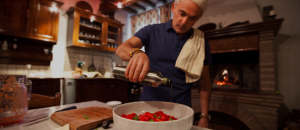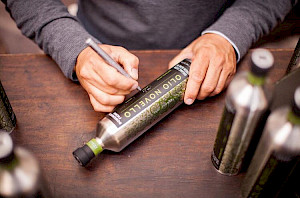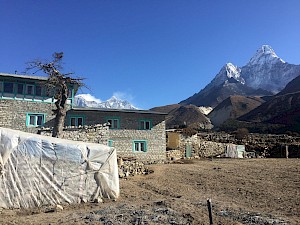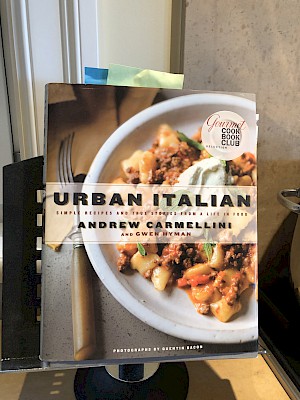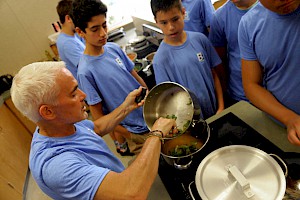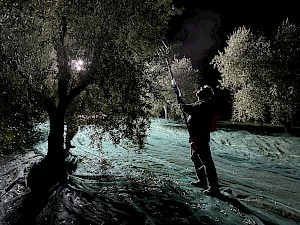Burgundy: A Wine You Can Love and Grow Old With
July 17, 2019When you love to cook Italian food as much as I do, you inevitably tend to drink red wine. It’s almost mandatory. And I happen to love red wine. Growing up in an Italian family meant there was always a bottle or carafe on the dinner table.
My father made his own wine for many years. Every October he would come home with a car load of Zinfandel grapes which we would unload and carry to our basement where he kept his wine press and oak barrels. I wasn’t crazy about the aroma that would drift upwards through the rest of the house during the fermentation process, which lasted a few months. By Christmas my father would be serving his latest vintage up to the family and guests. Truthfully, it was pretty horrible wine. (Although that didn’t stop my teenage friends and me from raiding his cellar on one or two occasions.) My sister once had it lab tested and discovered it contained 17% alcohol, which is high for wine. You could polish the wheels on your car with this stuff.
Of course, my father didn’t care. As long as it was red and made from grapes, it was good enough for him. (He didn’t consider white wine to be real wine.) Throughout his life, I would bring him gifts of some very high-end wines, which he would drink without comment. He was equally happy with a ten dollar bottle that he’d buy at the local liquor store.
I don’t consider myself a connoisseur by any means. I couldn’t tell you if a particular wine had a certain bouquet; fruity, floral or herbal or it’s acidity with any accuracy. I only know good wine from a bad one. And if it tastes good, I drink it.
Having said that, I have always migrated towards Italian wines, especially the Tuscan varietals. And over the years I’ve built up a nice collection in my cellar. I never questioned my preference for Italian. That is, until my recent trip to France.
I was on a bike-riding trip through Burgundy, in eastern France, with a group of friends. It’s pretty much the same group that I do all my adventure trips with. We decided on biking for this particular holiday as a welcome change from climbing mountains. We would still get our workouts, but unlike mountain climbing we could look forward to a good meal and a warm bed afterwards. That, and of course wine.
 The scenery in the Burgundy region is beautiful. We rode through many small villages and vast open areas of wheat and sunflower fields. Once we approached the slopes, we started to see patches of forest and the vineyards that have made this region so well known. To get the most out of our trip, we decided to start our rides early in the morning to avoid the midday summer heat and to allow us the afternoons to taste wines and enjoy the local cuisine.
The scenery in the Burgundy region is beautiful. We rode through many small villages and vast open areas of wheat and sunflower fields. Once we approached the slopes, we started to see patches of forest and the vineyards that have made this region so well known. To get the most out of our trip, we decided to start our rides early in the morning to avoid the midday summer heat and to allow us the afternoons to taste wines and enjoy the local cuisine.
The Burgundy region produces some of the most expensive wines in the world. The red wine is produced from the Pinot noir grape which is indigenous to the region. I was curious as to why this was the case, so I spent an hour interrogating our guide. His answers started with a brief history of the region and the various groups that developed the vineyards over the centuries. Celtic tribes planted vines 2000 years ago during the Roman Empire period. It’s thought that Celts returning from the Roman legions brought back the know how. The original vines were planted in the valley (the area is an ancient sea bed) where the soil was deep, rich and flat.
In the 5th century a Germanic tribe from a small island in the Baltic Sea migrated and settled in the area. The Burgundians, who converted to Christianity, were allies of Rome and established the Kingdom of Burgundians. They were responsible for making Burgundy wine famous for two reasons. First, since the valley areas were already planted by the local population, they took to the slopes where shrubs and bushes existed. The soil on the slopes was very shallow (in some places only ten centimetres deep) and closer to the limestone sediment than the valley floor where the soil was rich and was up to ten metres deep. This difference is important because, as our guide put it, ”rich soil makes poor wine”. I asked him why and he told us that “vines need to suffer“. Vines love dry, rocky soil and especially limestone.
Burgundy also has a colder climate than Tuscany, giving the wine a higher level of acidity. This feature gives the wine a freshness and less fruity quality and helps with the aging of the wine. He told us climate change was putting this quality at risk as the summers are getting hotter. Another advantage of this area is that the slopes are facing east, which gets the sun early and keeps the soil and vines dry. Humidity and moisture is the enemy. I understood the importance of these features because it’s some of the same features of my world class Domenica Fiore olive oil estate in Italy, which also sits on an ancient sea bed rich in limestone (we still find shells and fossils) on a slope that faces eastward.
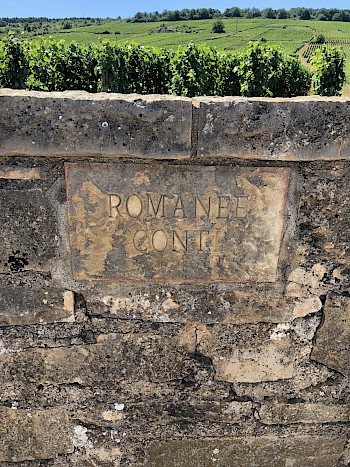 The other important change the Burgundians made was to create new rules for vineyard owners. One of the new rules mandated that each vineyard needed to be fenced to keep animals and thieves at bay. These fences or walls were called Clos (hence wines such as Clos de Vougeot which is one of my new favourites). These new rules helped improve the quality of the wines and increased their popularity.
The other important change the Burgundians made was to create new rules for vineyard owners. One of the new rules mandated that each vineyard needed to be fenced to keep animals and thieves at bay. These fences or walls were called Clos (hence wines such as Clos de Vougeot which is one of my new favourites). These new rules helped improve the quality of the wines and increased their popularity.
I can now testify that Burgundy red wine is truly a great wine. It is also very scarce, representing only two percent of all French wine production from its 33 vineyards. Burgundy wines are classified into four categories, with the Gran Cru considered the top quality of the four. Gran Cru represents only 2 percent of all Burgundy wine production, so you can imagine how expensive it can be. Romanée-Conti is considered the most sought after and expensive wine in the world. In October 2010, 77 bottles sold for US$750,609. I was told it’s more about its history and reputation than its quality, but they only produce 8,000 bottles per year from a mere 1.8 hectare vineyard. Personally, I think anyone that spends thousands of dollars for a bottle of wine is either being unknowingly scammed or just plain showing off.
An old friend once told me that as we get older, we red wine drinkers migrate to Burgundy. And this was verified by our guide. His explanation was that as we get older our tastes change and we tend to prefer flavours that are more subtle and delicate. Younger people like more full bodied wines with good structure, lots of tannins and higher alcohol content. He called this preference a more “explosive“ taste than the smoother wines of Burgundy. I suppose this might be a lot like relationships. Younger people tend to endure a lot more drama in their relationships than older couples do. In any event, our guide postulated that a lot of people migrate from other wine regions to Burgundy, but never from Burgundy back to any of the others. Works for me.
If you haven’t already tried Burgundy reds, I recommend giving it a go next time you are shopping for a bottle. As for myself, it looks like I have found a gentler, more delicate wine to love and can grow old with. Once I finish my remaining bottles of Italian red, that is.

